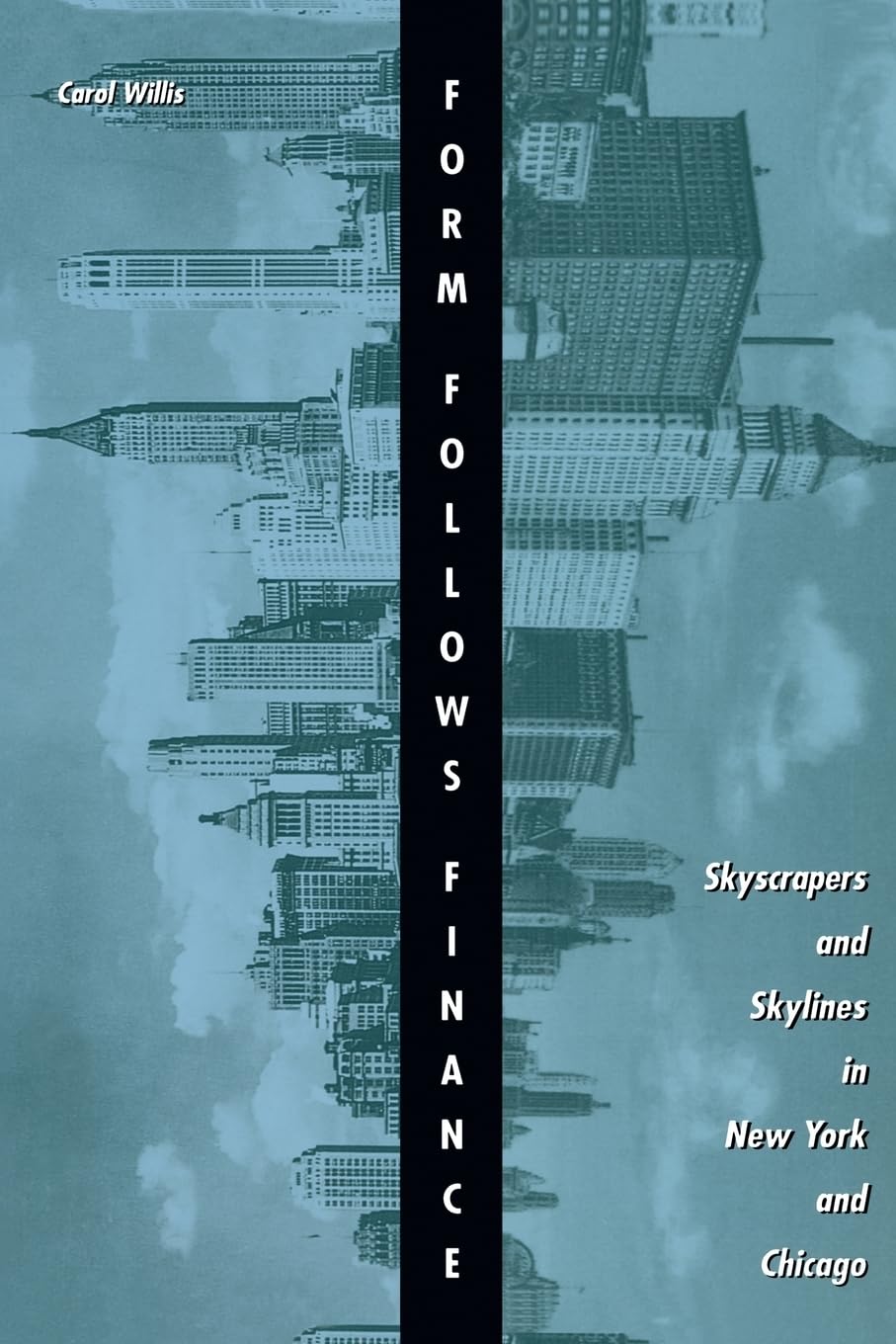
Title

Form follows Finance: Skyscrapers and Skylines in New York and Chicago,Used
Delivery time: 8-12 business days (International)
Although fundamental factors of program, technology, and economics make tall buildings everywhere take similar forms, skyscrapers in New York and Chicago developed very differently in the first half of the twentieth century. In contrast to standard histories that counterpose the design philosophies of the Chicago and New York 'schools,' Willis shows how market formulas produced characteristic forms in each city'vernaculars of capitalism'that resulted from local landuse patterns, municipal codes, and zoning. Refuting some common clichs of skyscraper history such as the equation of big buildings with big business and the idea of a 'corporate skyline,' Willis emphasizes the importance of speculative development and the impact of realestate cycles on the forms of buildings and on their spatial distribution.Form Follows Finance cautions that the city must be understood as a complex commercial environment where buildings are themselves businesses, space is a commodity, and location and image have value.
By changing our most important processes and
products, we have already made a big leap forward. This ranges from the
increased use of more sustainable fibers to the use of more
environmentally friendly printing processes to the development of
efficient waste management in our value chain.
⚠️ WARNING (California Proposition 65):
This product may contain chemicals known to the State of California to cause cancer, birth defects, or other reproductive harm.
For more information, please visit www.P65Warnings.ca.gov.
Shipping & Returns
Shipping
We ship your order within 2–3 business days for USA deliveries and 5–8 business days for international shipments. Once your package has been dispatched from our warehouse, you'll receive an email confirmation with a tracking number, allowing you to track the status of your delivery.
Returns
To facilitate a smooth return process, a Return Authorization (RA) Number is required for all returns. Returns without a valid RA number will be declined and may incur additional fees. You can request an RA number within 15 days of the original delivery date. For more details, please refer to our Return & Refund Policy page.
Shipping & Returns
Shipping
We ship your order within 2–3 business days for USA deliveries and 5–8 business days for international shipments. Once your package has been dispatched from our warehouse, you'll receive an email confirmation with a tracking number, allowing you to track the status of your delivery.
Returns
To facilitate a smooth return process, a Return Authorization (RA) Number is required for all returns. Returns without a valid RA number will be declined and may incur additional fees. You can request an RA number within 15 days of the original delivery date. For more details, please refer to our Return & Refund Policy page.
Warranty
We provide a 2-year limited warranty, from the date of purchase for all our products.
If you believe you have received a defective product, or are experiencing any problems with your product, please contact us.
This warranty strictly does not cover damages that arose from negligence, misuse, wear and tear, or not in accordance with product instructions (dropping the product, etc.).
Warranty
We provide a 2-year limited warranty, from the date of purchase for all our products.
If you believe you have received a defective product, or are experiencing any problems with your product, please contact us.
This warranty strictly does not cover damages that arose from negligence, misuse, wear and tear, or not in accordance with product instructions (dropping the product, etc.).
Secure Payment
Your payment information is processed securely. We do not store credit card details nor have access to your credit card information.
We accept payments with :
Visa, MasterCard, American Express, Paypal, Shopify Payments, Shop Pay and more.
Secure Payment
Your payment information is processed securely. We do not store credit card details nor have access to your credit card information.
We accept payments with :
Visa, MasterCard, American Express, Paypal, Shopify Payments, Shop Pay and more.
Related Products
You may also like
Frequently Asked Questions
- Q: What is the main focus of 'Form follows Finance'? A: 'Form follows Finance: Skyscrapers and Skylines in New York and Chicago' examines how market forces and local regulations influenced the design and development of skyscrapers in these two major cities during the early twentieth century.
- Q: Who is the author of this book? A: The author of 'Form follows Finance' is Carol Willis, who explores the relationship between architecture and financial factors in urban development.
- Q: What topics are covered in the book? A: The book covers topics such as architectural design, economic factors, local land-use patterns, zoning laws, and the impact of real estate cycles on skyscraper forms and city skylines.
- Q: Is this book suitable for students of architecture? A: Yes, this book is suitable for architecture students and professionals as it provides insights into the economic and regulatory influences on skyscraper design.
- Q: What is the condition of the book being sold? A: The book is listed as a 'Used Book in Good Condition', indicating that it has been previously owned but is still in a usable state.
- Q: How many pages does the book have? A: 'Form follows Finance' contains 220 pages, providing a thorough exploration of its subject matter.
- Q: What type of binding does the book have? A: The book is available in paperback binding, making it lightweight and easy to handle.
- Q: When was 'Form follows Finance' published? A: 'Form follows Finance' was published on December 1, 1997.
- Q: What makes this book different from other architecture histories? A: This book differs from other architecture histories by focusing on how financial and market conditions shaped skyscraper designs rather than just the architectural styles of different schools.
- Q: Can this book help understand urban development? A: Yes, it provides valuable insights into how economic and regulatory factors impact urban development, making it a useful resource for understanding city planning and architecture.
